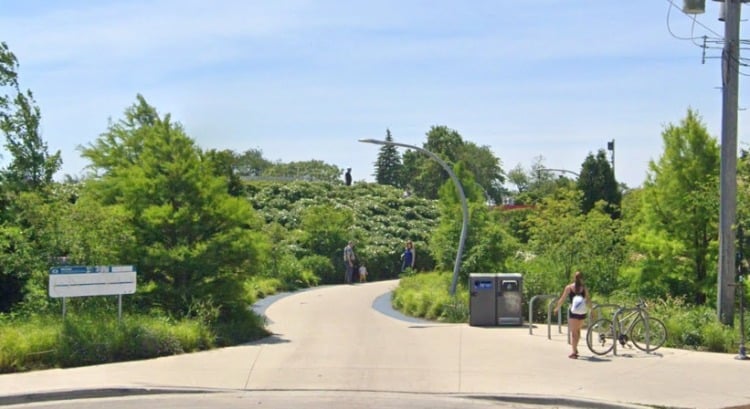As the introductory post in a new series in which we highlight local attractions and businesses in the region, the Chicago attorneys for sexual assault victims of LBK hope you find it value and continue to count on our team with your legal concerns.
The elevated railroad viaduct that many consider the heart of The 606 was once a busy freight line serving Chicago’s early industries. Though it was critically important to the city’s economy, the structure itself divided neighborhoods and gradually faded and finally died in 1990. In 2011, Chicago Mayor Emanuel began to pursue a new design for the old viaduct which eventually led to it becoming a landscaped parkland for riding bicycles, running, or leisurely strolls.
The Early Days of the 606
The story of The 606 begins just after the Great Chicago Fire.
In their efforts to rebuild the city, the City Council gave permission for the Chicago & Pacific Railroad to lay tracks down the middle of Bloomingdale Avenue on the city’s Northwest side. The move helped connect goods from outlying ports to the busy Chicago River while also supporting Chicago’s industrial sector.
Following the Fire, Chicago’s population boomed, and dangerous conflicts between residents and rail abounded. Naturally, the rail was largely the winner. Between the 1870s and 1890s, thousands were injured or killed each year due to rail crossings. In response, elevating the city’s rail lines became a political hot button and a critical issue for social reformers. In 1893, the City Council passed an ordinance mandating that railroads elevate their tracks within six years. The Bloomingdale Line was one of the last to conform to the new ordinance, beginning work in 1910 and completing in 1913. In a testament to American and Chicagoan ingenuity, rail service continued uninterrupted throughout construction.
The embankments created by elevating the line are essentially enormous concrete bathtubs filled with soil, stones, and other drainage material. Themselves seven feet thick at the base, these walls have proved sturdy for over 100 years and form a firm foundation for the centerpiece that is the Bloomingdale Trail.
For nearly a century, the rail line served a small manufacturing district across the city’s Northwest side, including bicycle, furniture, confection, and instrument makers. Trains rolled overhead until the 1980s when activity slowed to a trickle. By the mid-1990s, the few trains that used the corridor were re-routed, and freight service ceased completely.
While the neighborhoods of Wicker Park, Bucktown, Humboldt Park, and Logan Square converted mainly to residential uses below, nature reclaimed the former rail line above. Trees sprang up between the tracks, flowers bloomed, and animals moved back into former habitats. It was only a matter of time before the communities along the line rediscovered the space. And those who ventured up unofficially in the early 2000s created an impromptu nature trail and found a natural habitat with unmatched views of the city.
Official plans for converting the Bloomingdale Line into a public space date back to the late 1990s, when it was included in the City’s Bike Plan. In 2003, the City’s Department of Planning and Development held a series of public meetings to determine how to bring new open space to the City’s Northwest side, forming the basis of what would become The 606.
The 2004 Logan Square Open Space Plan called for an ambitious reuse of the former industrial rail corridor. This spurred the formation of the Friends of the Bloomingdale Trail, a group of residents who would champion the project for the next decade, dedicated to making the vision become a reality.
The Chicago attorneys for sexual assault victims of LBK, avid fans of the 606 themselves, hope you’ve found this read on the heritage of this Chicago landmark entertaining. If so, make sure to check out our future pages highlighting additional local businesses and activities.

